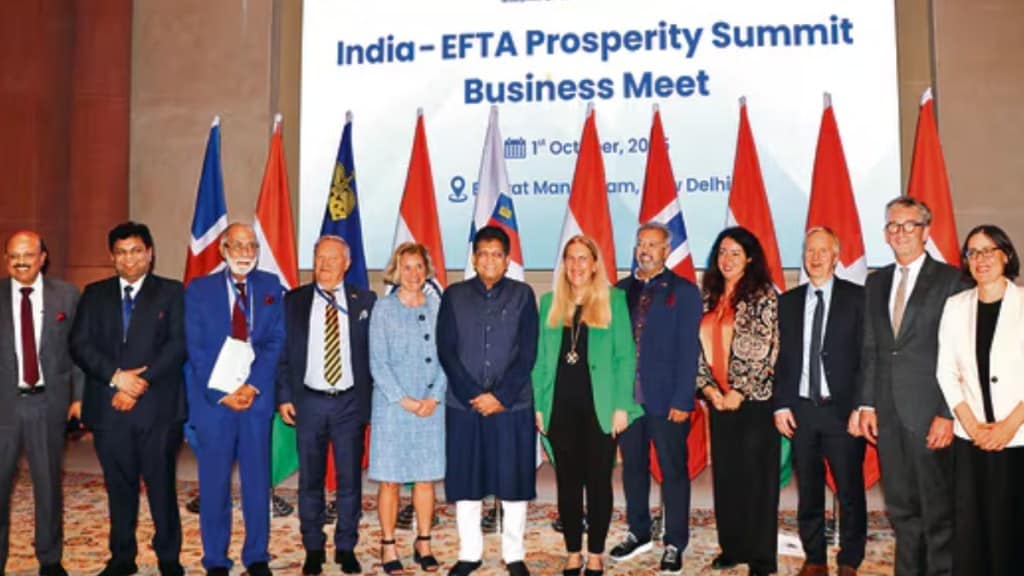The Trade and Economic Partnership Agreement (TEPA) between India and the four EFTA nations, which are Iceland, Liechtenstein, Norway and Switzerland, has officially came into effect on Wednesday, marking a major step forward in strengthening the trade ties.
India has joined hands with the EFTA bloc, which is known for its strong presence in global trade. Together, the five economies represent a combined GDP of about $5.4 trillion.
To mark the occasion, a summit was held in New Delhi, which was led by Commerce and Industry Minister Piyush Goyal and senior officials from all four EFTA countries. Business leaders from both sides also took part, exploring opportunities in precision manufacturing, clean technologies, and services.
What does the TEPA deal between India and EFTA countries aim for?
The deal aims to attract $100 billion in investments into India over the next 15 years and create one million direct jobs. An investment monitoring system will track progress on these goals.
Official authorities have said the agreement will boost trade, investment, and supply chain integration across goods and services. It will also make the customs process easier, improve market access, and promote skill recognition and qualifications, which in-turn will help businesses on both sides to grow faster.
Which sectors will benefit under TEPA?
Coffee: EFTA has removed import duty on all coffee products. Switzerland and Norway are strong, high-value markets for premium coffee. TEPA will give Indian coffee producers the best access to these markets. This opens opportunities to sell India’s specialty coffees like the shade-grown, handpicked, and sun-dried, in Switzerland, Norway, and Iceland.
Tea: The EFTA tea market is about 3 million kilograms. After TEPA, the average price for Indian tea exports has gone up, from $5.93/kg in 2023-24 to $6.77/kg in 2024-25.
Textiles and Clothing: India exported $130 million worth of textiles and clothing to EFTA in 2024. Compared to India’s total global exports of $36.71 billion, the EFTA market still has room to grow. TEPA’s tariff cuts make it easier for India to expand in this sector.
Sports Goods and Toys: TEPA removes most import duties on these items. Simpler rules for standards and certifications will lower costs for Indian exporters and make their products more competitive in EFTA markets.
Leather and Footwear: EFTA already allows leather and footwear imports with zero duty. TEPA ensures this benefit continues, giving Indian exporters long-term stability.
Gems and Jewellery: Indian gems and jewellery already enter EFTA markets duty-free, and TEPA keeps this advantage.
Processed Food Products: There is a big opportunity for biscuits, chocolates, confectionery, malt extracts, sauces, and other packaged foods.
Rice (Basmati & Non-Basmati): Removing tariffs makes Indian rice more competitive compared to Italy, Thailand, and Pakistan.
Guar Gum & Pulses: India is already a leading exporter, with Guar Gum making up 70% of exports in FY25. TEPA will help India capture an even larger market share.
Fresh Grapes, Mangoes, Vegetables, Millets: Lower tariffs make it easier for these products to enter EFTA markets and improve India’s position there.
Cashew Kernels & Other Nuts: High demand in EFTA countries offers India opportunities to increase exports in this sector.

